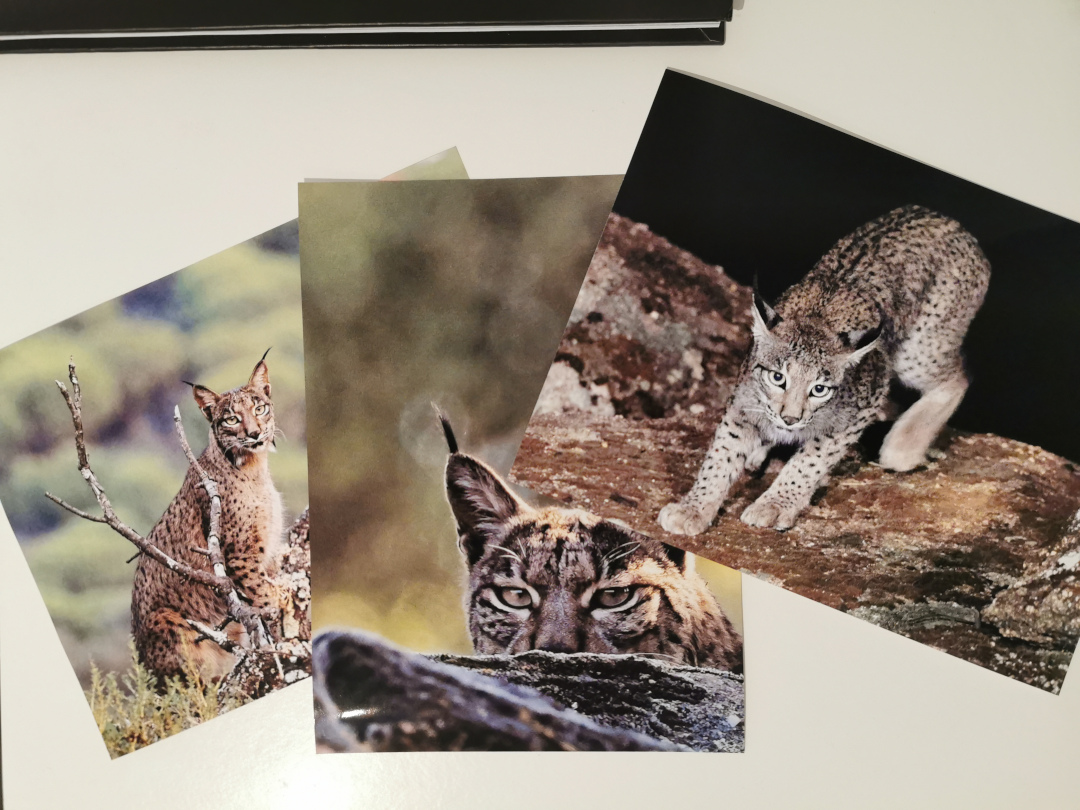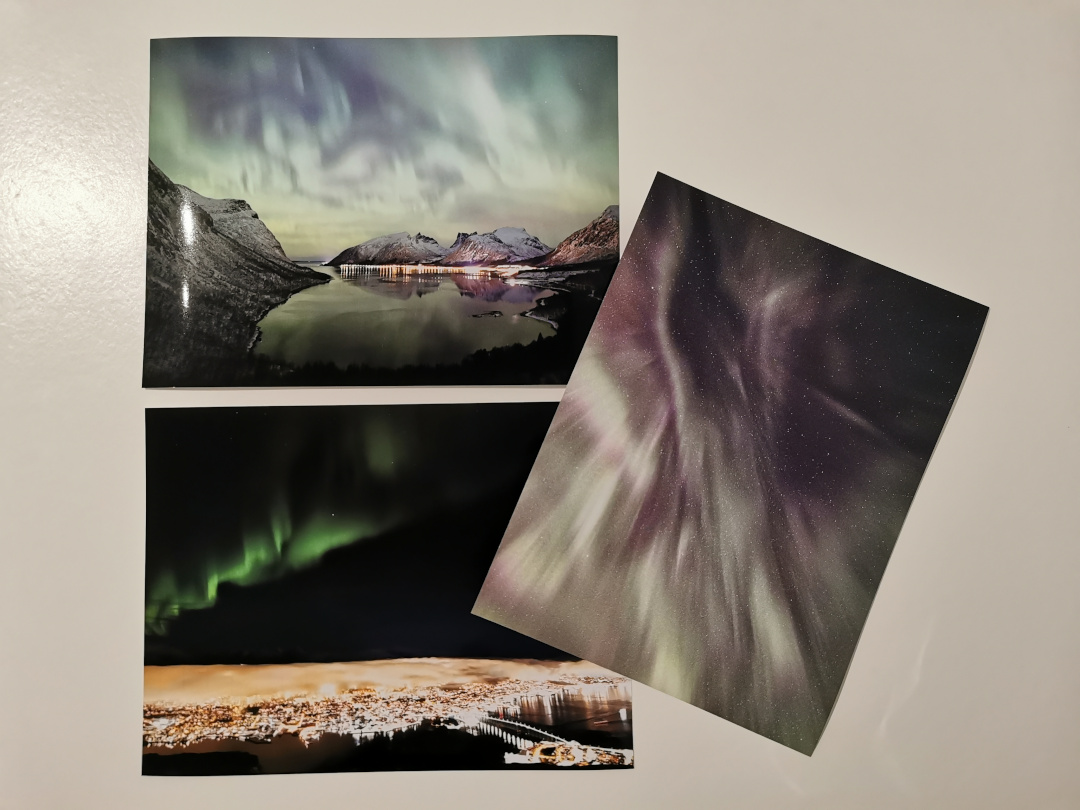Why should a photograph be printed
Exactly five years ago I heard from the Brazilian nature photographer Araquém Alcantara that “photography is only complete with the photo printed in a book or hanging on the wall”. I assumed that as an universal truth and a couple of months later many photos that I made were hanging on someone’s wall. I was given two old printers and could make one of them work. And it worked a lot during the pandemics. I have to admit that, from a photographer’s perspective, printing our photos is really satisfying, and even more so when printing by ourselves.
Apart from the personal satisfaction of seeing the photograph, little by little, coming out from the printer, to look at the final result on the wall is another completely different pleasant experience. Each experience, however, is related to a role in photography: the artist and the consumer. One single person can play both roles actively. Indeed, I am always surprised with a photography artist that does not consume the arts of other photographers (and I know some of them). A consumer of photography, however, does not necessarily have to be a photographer, for example, collectors who buy magazines or fine art prints.
The printed photograph is what tightens both roles, no matter if they are represented in a single individual (artist-consumer) or several persons (one artist and many consumers). Thus, the printed photos connect emotions from one side with another, even without physical connections between artist and consumer.
From the consumer’s perspective, regardless of the type of photograph, e.g. taken from its own phone or an expensive limited edition archival fine art print, the use value of the photo is the expected personal satisfaction from a good memory of a time, place or event, or the pleasant decoration of a physical space (a dinner room, kitchen, corridors, working places etc).
There are several reasons to print a photo from the artist’s perspective, depending on the case. If a hobbyist, it could be said that the same reasons from the consumer could be applied. Moreover, printing will enhance the photographic, editing, curating and printing skills, making the person a “better photographer”. If a professional, the same from the hobbyist is valid, however, the ultimate reason to print is the marketing and income. To become a better photographer is a means for improving the sales (with many other factors behind, of course, e.g. learning how to sell). When making a living out of photography, printing is an essential part of the job.
However, after a couple of years studying printing, photography and history of arts, all of this was still not enough to me to justify the universal truth of the completeness of the photographic process with the print. I questioned this quote and looked for an explanation beyond the nostalgia of the darkroom. I really wanted to understand, from the artist’s perspective, the reason for the print beyond emotions and profits. Why was I printing and wanting to print more, to publish photographs in books, to sell fine art prints? Note: this is not related to why I wanted to produce more photos or essays, this is just related to the printing process.
Then, a first draft of this text came in October 2022, after watching an interview with Adobe’s vice president Marc Levoy, and discussing the interview with some friends. At some point, Levoy states the following about the high dynamic range of the screens: “a photographic print, something you hold in your hand, has a dynamic range of only about 50 to 1, meaning the brightest parts of the photograph can only be 50 times more reflective than the black part of the photograph. But the dynamic range of these [Apple] displays can be way over a thousand to one”.
The truth was there all the time, shining as bright as a calibrated monitor or as a smartphone’s screen, and I couldn’t see. Come on, I always knew that looking at the photos from a device wasn’t my purpose because each screen will display the colours, the temperatures, the brightness, contrasts and the tones in a different way. Who first told me not to rely on screens to appreciate my art was the same professional that printed my first photos in archival paper and gifted me the two printers. Thus, I came to the conclusion that the only way to control the whole process, making sure people will see the photograph as I want it to look, is by printing. This was to me the missing piece in the puzzle of the completeness of photographic art.
Perhaps it is a bit boring to go deeper into this, but bare with me. I know that physiological and emotional differences between individuals will make them see (and feel) the photograph in different ways. Nevertheless, the only way photographers have to make sure their final art will not look too dark or too bright, the blacks are not blues, the reds are not magenta, the sharpness is fine, the framing is pleasant, etc, is proofing it by printing, printing, printing again and again and as much as needed to reach the final expected result. Whether consumers will enjoy the look of the print is another point. What is important is that the art is only completed when printed because it is the only tool the artist has to display as the artist wants it to look..
Ok, at this stage you might be thinking that this is way too obvious and I have played such an idiot role for several years trying to find peace of mind with my purpose in printing. I assume I was a bit ashamed to publish the first draft, back in 2022, with such an obvious consideration on why I should print my photos. Then, in early January 2024, I decided to google “why printing photographs” and the results surprised me A LOT. I also asked the big internet parrot ChatGTP with no surprise. All my google findings were replicated there without variations, so I will discuss this “intelligence” hopefully in the next blog post.
Let’s get back to Google. From five to eight, or even one or eleven “reasons to print your photos”, or “why is it a good idea to print your photos”, I compiled and analysed the thoughts in the blogosphere. In just 0.35 seconds, Google returned 4.190.000.000 results. Obviously I would never take a look into all of them, so I decided to read, in the order Google suggested, the first one hundred pages, excluding Youtube videos, Wikipedia articles and photo printing services. After 313 “relevant” pages, Google stopped displaying more results, so I had a representative sample, with a 95% confidence interval and an estimated error of 5.54%.
The statistics are irrelevant, as only 47 pages were actually discussing the reasons for printing, available in this sheet. You do not need to read the 47 to get used to the common reasons. In short, the blogosphere compiled 18 explicit reasons to print a photo, as shown in the table below. Only the first two articles already mentioned the first 9 (50%) common reasons, and more than 70% of the reasons were already presented in the first six articles. The “most complete” article, with 12 out of the 18 reasons, was the 30st in the Google ranking. In my opinion, it is a good post yet very superficial. However, it is amongst the only ones that mentioned my reason to print.
|
Reason |
# of articles (47 in total) |
|
1. Memories |
33 |
|
2. Tangibility / Physical experience |
31 |
|
3. Longevity of the prints |
22 |
|
4. Backup |
18 |
|
5. Personal satisfaction |
16 |
|
6. Gift giving |
13 |
|
7. Decoration |
13 |
|
8. Enhance photographic skills |
12 |
|
9. Marketing |
11 |
|
10. Complete the artistic process |
9 |
|
11. Learn new skills (editing/printing) |
8 |
|
12. Getting inspired |
8 |
|
13. Enhance curation skills |
7 |
|
14. Low price / ease |
4 |
|
15. Show true vision |
3 |
|
16. Explore creativity |
3 |
|
17. Fit all spaces |
1 |
|
18. Free disk space after printing |
1 |
*italic reasons are those mainly for photographers. All of the other applies to consumers or both.
Of course, there are overlapping reasons, and my interpretation of some might not fit the interpretation of someone else’s, but the role of having the picture as something to remember, “cherishing memories”, is by far the most common reason, in 70% of the articles. Followingly, the tangibility of the printed photo as a unique physical experience is mentioned in 65% of the blogs.
So, where is the surprise? Just three articles, including the “most complete” cited my obvious reason why I want my photos printed. The first one to cite this was the 25th in the Google ranking. After this, I decided this blog was worth enhancing and posting. Maybe it is not too obvious that the art of photography is only complete when printed because it is the way the artist wants it to look. If this is not obvious for artists, is it obvious for consumers? To what extent photographic artists are conscious of the role of testing and printing several times before putting their photographs into the market? Was it a secret kept amongst the best photographers? Don’t know. Maybe just an unquestioned universal truth in the common sense of photography.
The “completeness” of the artistic photographic process is explicitly cited in nine articles, being the first one ranked in Google’s seventh position. However, only one of them cites it as the proof of the final art.
There are other interesting reasons worth mentioning here because other posts would be too much in this same theme. 1) there is someone that deletes the photos after printing, and claims that printing free disk storage; 2) photography fits into all spaces, and this is relatively true. I found this interesting because I never heard it as a reason to have a print on the wall; and 3) printing lets artists explore their creativity, by testing different compositions, colours etc.
Another funny reason, mentioned in almost 40% of the articles, is that a print serves as a backup. It seems to me a bit stupid to backup digital photos with prints, instead of making a really good backup of the digital files. Some claim that the prints are indestructible, which is far from real for a number of reasons (flood, fires, ink and paper degradation etc).
Printing photography to give as gifts also caught my attention. Not because it was mentioned a lot of times, but this is exactly what I did last month when I left my job. I printed 26 photos to give to my working colleagues and up to now I am receiving lovely feedback from them.



Finally, most reasons I found in my quick Google research are from a consumer perspective probably because the posts are trying to sell a product, whether a printed photo or a printing service. It doesn’t matter the role you are in, take advantage of the invaluable use value of photographs hanging on the wall, or photobooks, or magazines – as memories, experiences or personal achievements. As an artist, I want to show my photos how I think they should be viewed. It matters less if this reflects sales, inspiration, admiration, hating or negative critics. Of course I do care about that and it is an important part of my career, but I do print to exercise both roles, as an artist that consumes and enjoys the complete process of the art of photography.
